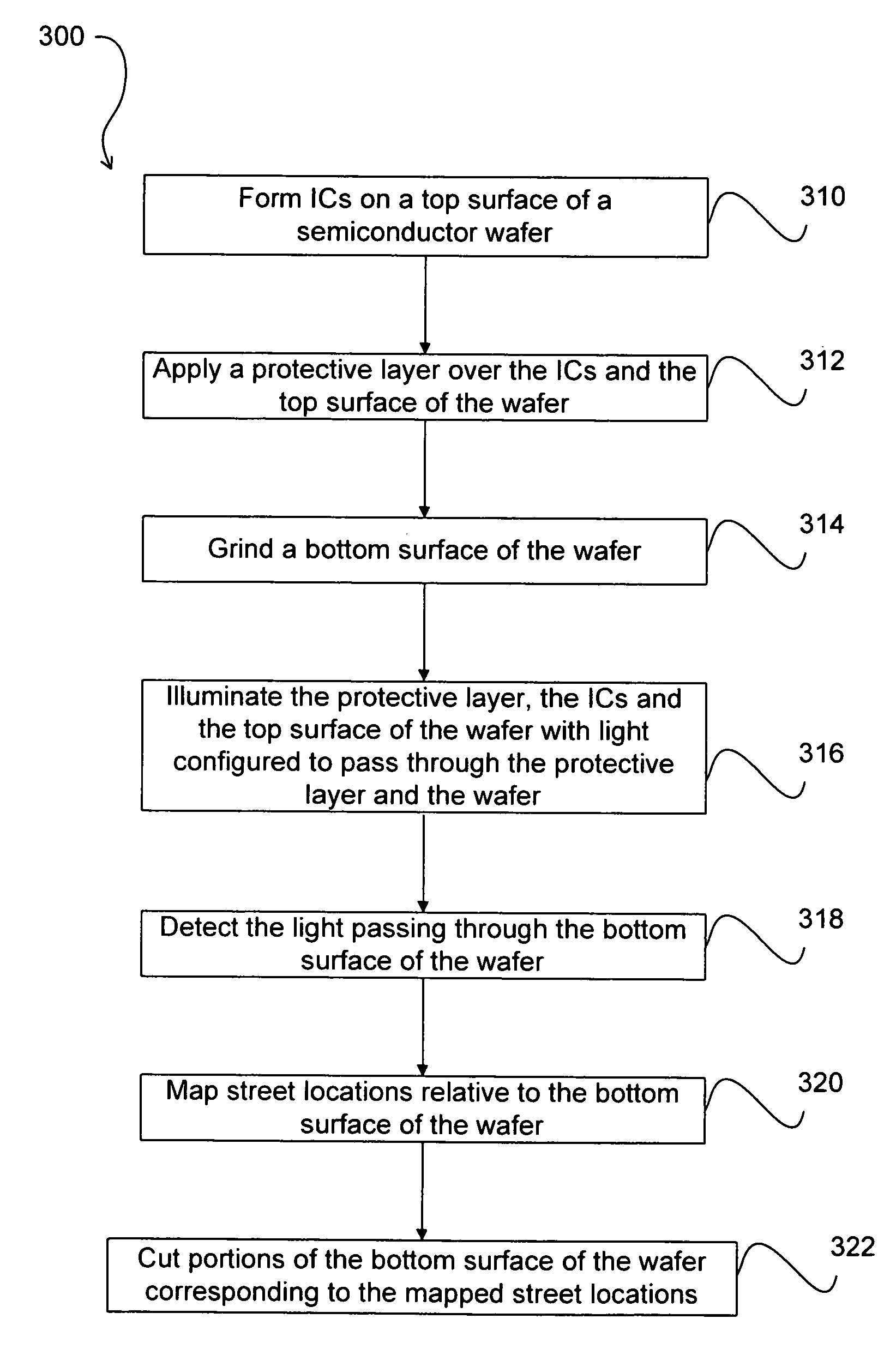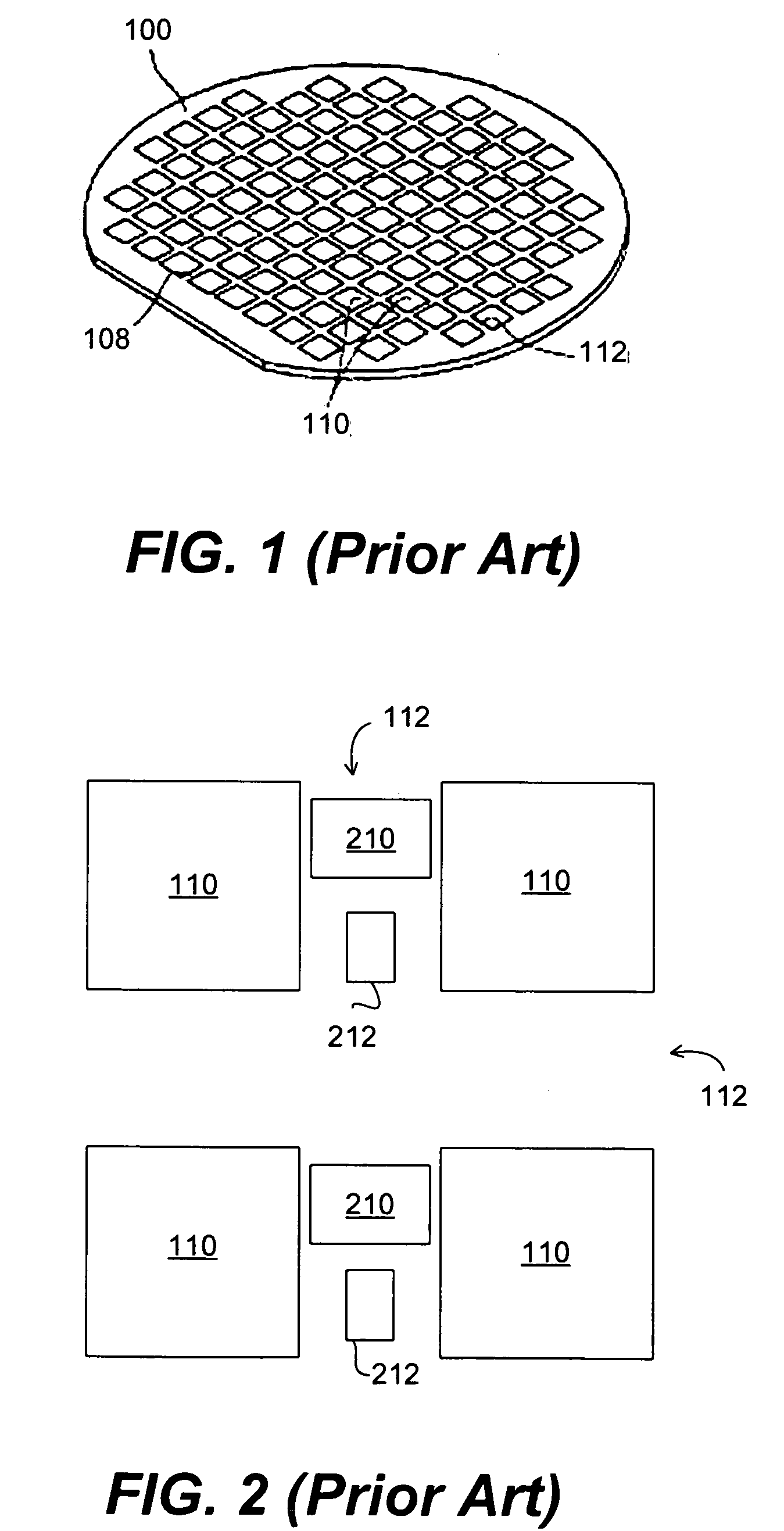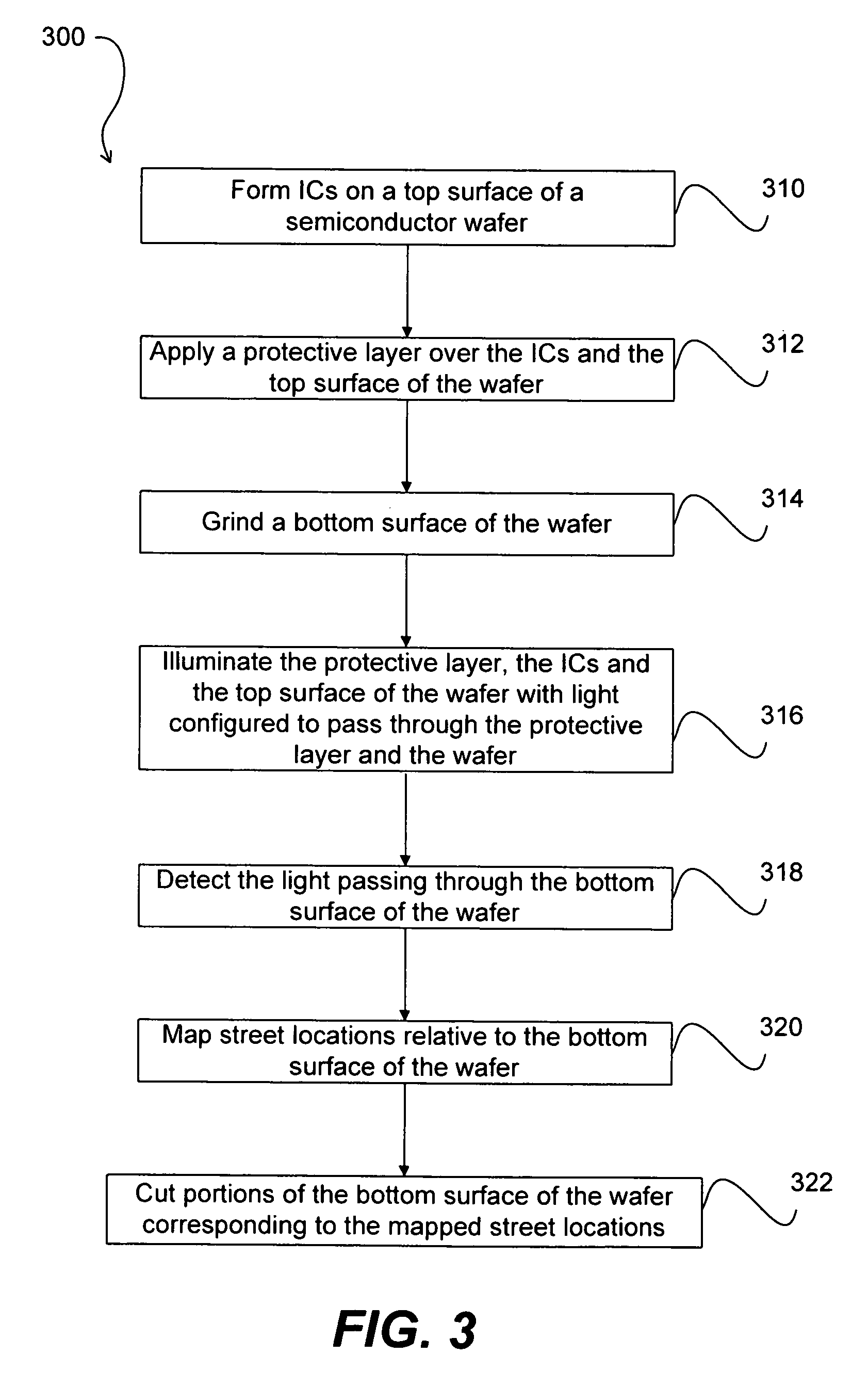Back side wafer dicing
a wafer and back side technology, applied in the field of dicing a wafer, can solve the problems of laser dicing damage to the ics b>110/b>, more edge chipping, and unprotected top surface of the ics b>110/b>, and achieve the effect of reducing or no damage or debris
- Summary
- Abstract
- Description
- Claims
- Application Information
AI Technical Summary
Benefits of technology
Problems solved by technology
Method used
Image
Examples
Embodiment Construction
[0019]To avoid cutting metal features (e.g., test circuits) or other materials such as low-k dielectrics formed on a top surface of a semiconductor wafer, certain embodiments disclosed herein provide systems and methods for cutting the back side of the semiconductor wafer. The back side of the semiconductor surface is also referred to herein as the “bottom” or “bottom surface” and is generally on an opposite surface from the front or top surface where ICs and dicing lines or streets are formed.
[0020]For convenience, the term cutting may be used generically to include trenching (cutting that does not penetrate the full depth of a target work piece) and throughcutting, which includes slicing (often associated with wafer row separation) or dicing (often associated with part singulation from wafer rows). Slicing and dicing may be used interchangeably in the context of this disclosure.
[0021]As discussed above, the streets are generally visible from the top surface of the semiconductor wa...
PUM
| Property | Measurement | Unit |
|---|---|---|
| Wavelength | aaaaa | aaaaa |
| Wavelength | aaaaa | aaaaa |
Abstract
Description
Claims
Application Information
 Login to View More
Login to View More - R&D
- Intellectual Property
- Life Sciences
- Materials
- Tech Scout
- Unparalleled Data Quality
- Higher Quality Content
- 60% Fewer Hallucinations
Browse by: Latest US Patents, China's latest patents, Technical Efficacy Thesaurus, Application Domain, Technology Topic, Popular Technical Reports.
© 2025 PatSnap. All rights reserved.Legal|Privacy policy|Modern Slavery Act Transparency Statement|Sitemap|About US| Contact US: help@patsnap.com



